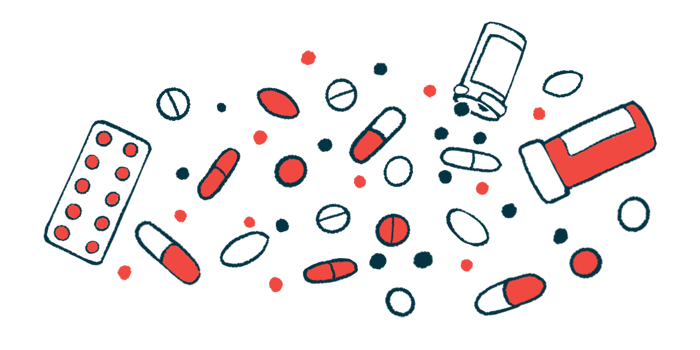Drug Interaction Results in Cushing’s Syndrome in HIV Patient

A man with a known history of human immunodeficiency virus (HIV) infection and asthma developed Cushing’s syndrome after taking Tybost (cobicistat) together with fluticasone, according to a report from Spain.
Tybost is a antiretroviral medicine booster, while fluticasone is a corticosteroid.
The condition occurred because Tybost slows down how fast antiretroviral medicines are broken down and removed from the body, allowing them to work for a longer period of time. It does so by blocking a liver protein called CYP3A4, which normally breaks down medicines in the body, including fluticasone.
This means Tybost might have led to the corticosteroid building up, which can cause Cushing’s syndrome. This is an example of a drug-drug interaction, which happens when a medicine affects how another medicine works or causes unwanted side effects.
“The case reported highlights the importance of drug-drug interactions [occurring] with the use of CYP3A4 inhibitors,” the researchers wrote.
For these patients, the authors suggest using an antiretroviral regimen that does not include a CYP3A4 inhibitor, or using beclometasone, a corticosteroid that’s only partly broken down by CYP3A4.
The report, “Cushing’s syndrome secondary to inhaled fluticasone,” was published as a letter in Endocrinología, Diabetes y Nutrición.
Antiretroviral medicines help people with HIV — the virus that causes acquired immune deficiency syndrome (AIDS) — live healthier longer. They also reduce the risk of HIV transmission. Treatment can be more difficult in those who have coexisting diseases due to drug-drug interactions, however.
Scientists in Spain reported the case of a 49-year-old man who was positive for HIV for more than 10 years. He was a smoker and had a history of dyslipidemia (an abnormal amount of fatty molecules in the blood), asthma, and ischemic heart disease — a heart problem caused by the large vessels that supply blood to the heart narrowing.
When he went to the hospital, he was receiving antiretroviral treatment with Isentress (raltegravir) in combination with darunavir, sold as Prezista. He was also receiving Tybost, which does not treat HIV directly, but is used to boost darunavir.
He also took omeprazole to control how much acid was being produced in his stomach; ezetimibe and rosuvastatin to treat dyslipidemia; and bisoprolol, ramipril, and acetylsalicylic acid to lower his blood pressure and treat his heart problem.
Asthma is a lung disease that makes it hard to breathe. To treat it, the man took salbutamol, fluticasone, and salmeterol via an inhaler twice a day, when needed. These medicines work by relaxing and opening the airways, while reducing swelling and inflammation, making breathing easier. In the previous five months, the man had increased the dose to the maximum recommended due to poor disease control.
A physical examination revealed a lack of energy and strength, and his ability to exercise had decreased. His face appeared rounded and he had stretch marks and fat buildup around his belly and neck. His arms and legs were thin and his skin bruised easily.
His blood levels of cortisol, a steroid hormone, and adrenocorticotropic hormone (ACTH) — the hormone that drives the adrenal glands on the kidneys to produce cortisol — were too low. His glucose (blood sugar) levels were abnormally high.
The doctors suspected the man might have iatrogenic Cushing’s syndrome — a form of Cushing’s associated with using certain medications. Usually, Cushing’s syndrome occurs when there is too much cortisol in the body. But sometimes it occurs as a result of taking a corticosteroid such as fluticasone for too long. Fluticasone works like cortisol and having too much of it in the blood can cause the body to stop making its own.
“As an interaction between fluticasone and cobicistat was suspected, both drugs were suspended,” the research team wrote.
The man instead was given beclometasone and a combination of bictegravir, emtricitabine, and tenofovir alafenamide. After two months, there were no Cushing’s symptoms and his ACTH and glucose blood levels were normal. Because his cortisol blood levels were still too low, the man received hydrocortisone, a form of cortisol replacement therapy.







